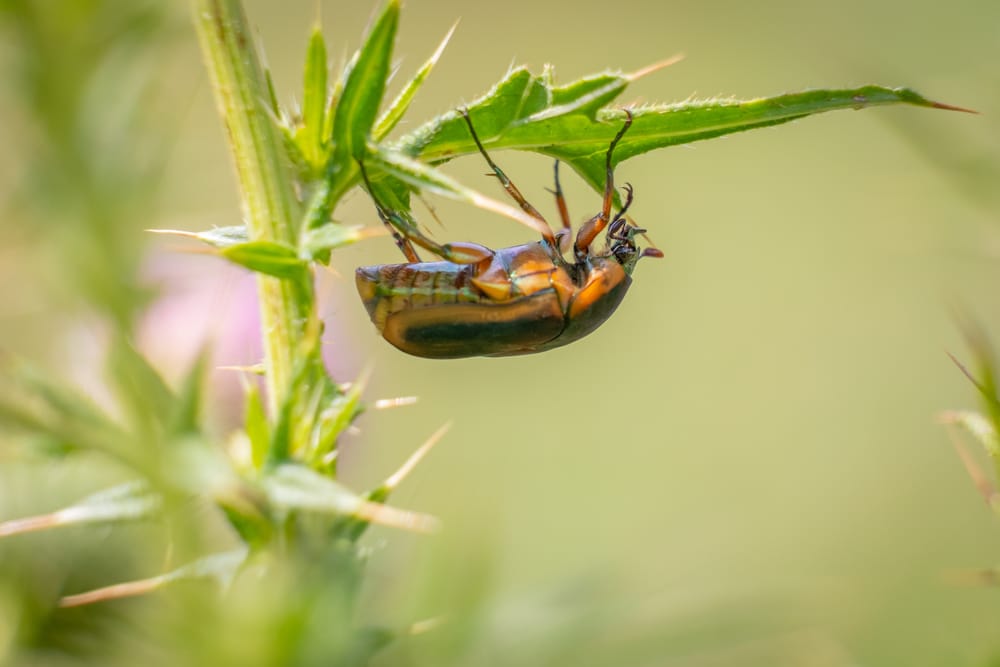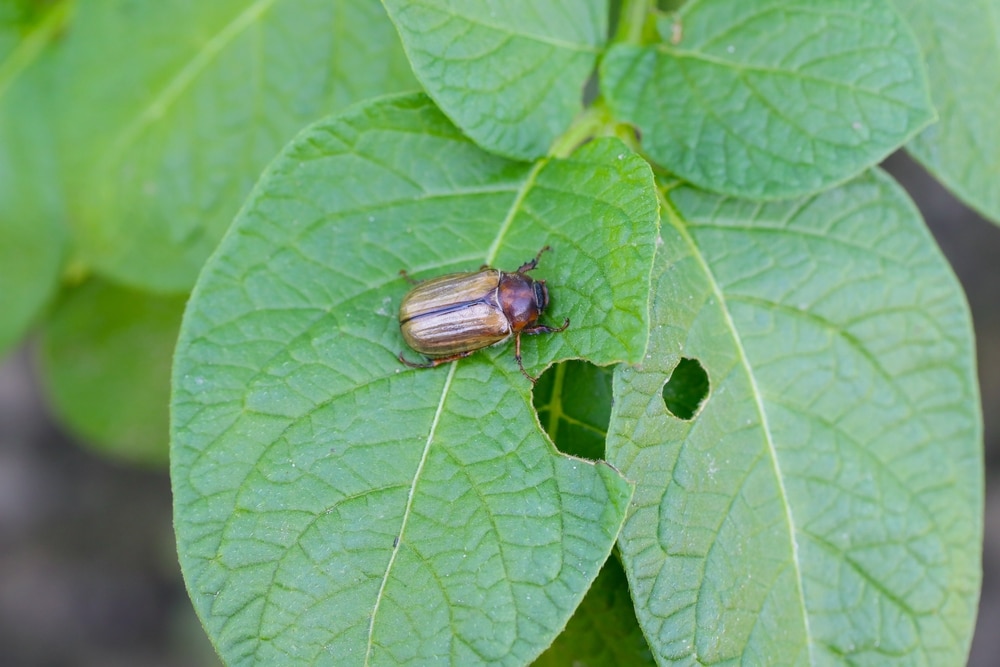June bugs are pretty common pests that can get into your home and yard. They live in various shrubs and, when an infestation occurs, can consume your plants in days. If you’ve noticed holes in plants such as rose bushes during the summer, June bugs are likely to be the culprit. Luckily, you can do a few things to deter them from both of those spaces. This article will discuss how to get rid of June bugs. We’ll discuss how to eliminate an infestation and prevent these insects.
What is a June bug?

June bugs are relatively large flying insects with a green shell. They grow up to one inch long and are active during the summer months between May and July. June bug is actually a generic name for four types of insects; the green June beetle, the ten-lined June bug, the Japanese green beetle, and the chafer beetle. These insects are members of the scarab family.
June beetles are clumsy and slow flying; they will often crash into things and are attracted to bright lights. The main problem with June bugs is that they will eat holes in the foliage of shrubs, trees, and plants. They also live amongst the grass, where they lay eggs. When the eggs hatch, they become larvae, which live in the soil while they grow.
The larvae feed on the grass’s roots and can kill large areas of grass. One of the main signs that you have an infestation of June bug larvae is large patches of brown grass that’s dried out and dying. If June bugs are the culprits, you’ll be able to pull large chunks of your turf grass away from the soil with ease and may even see small white grubs in the ground underneath. The grubs are most active during the summer months.
How to get rid of June bugs
It’s important to understand the habits of June bugs; they are often found living in grasses, trees, or shrubs. They hide during the day and come out in the early evening, and are attracted to lights at night. Ensuring that any outside lights you have on at night are covered with screens or mesh can help reduce their attraction to your property.
Keep Grass short
Another good idea is to keep your grass cut short and remove any woodpiles, piles of leaves, or debris on your lawn. These make great hiding places for the bugs and can also be a source of food for them. Giving your yard a good clean-up can help to remove habitats that can otherwise become infested with insects.
Use an insecticide
You might consider using pesticides or bug repellents to keep June bugs from making a home in your yard. If you have pets or small children, however, it’s essential to be sure to use pet and child-safe products.
Insecticides can be applied to your lawn to kill June bug larvae. Choose a product that’s been specifically formulated for killing the larvae of June bugs and similar insects and follow the instructions on the label. Always wear gloves when applying chemicals to your lawn.
Catch the adult June bugs
As well as treating the soil for larvae, you can also trap and kill the adult June bugs. You can catch them by hand in the evenings by encouraging them to fly towards light. Alternatively, make a June bug trap using molasses mixed with water.
Attract predators to your yard
Many birds and animals will eat June bugs and their larvae. By creating a suitable environment for birds by adding a bird bath, trees, and shrubs to your yard, you’ll be able to attract wildlife and control June bug populations.
Final thoughts
Using these tips, you can successfully eliminate June bugs in your yard and keep them from returning. Good luck!
